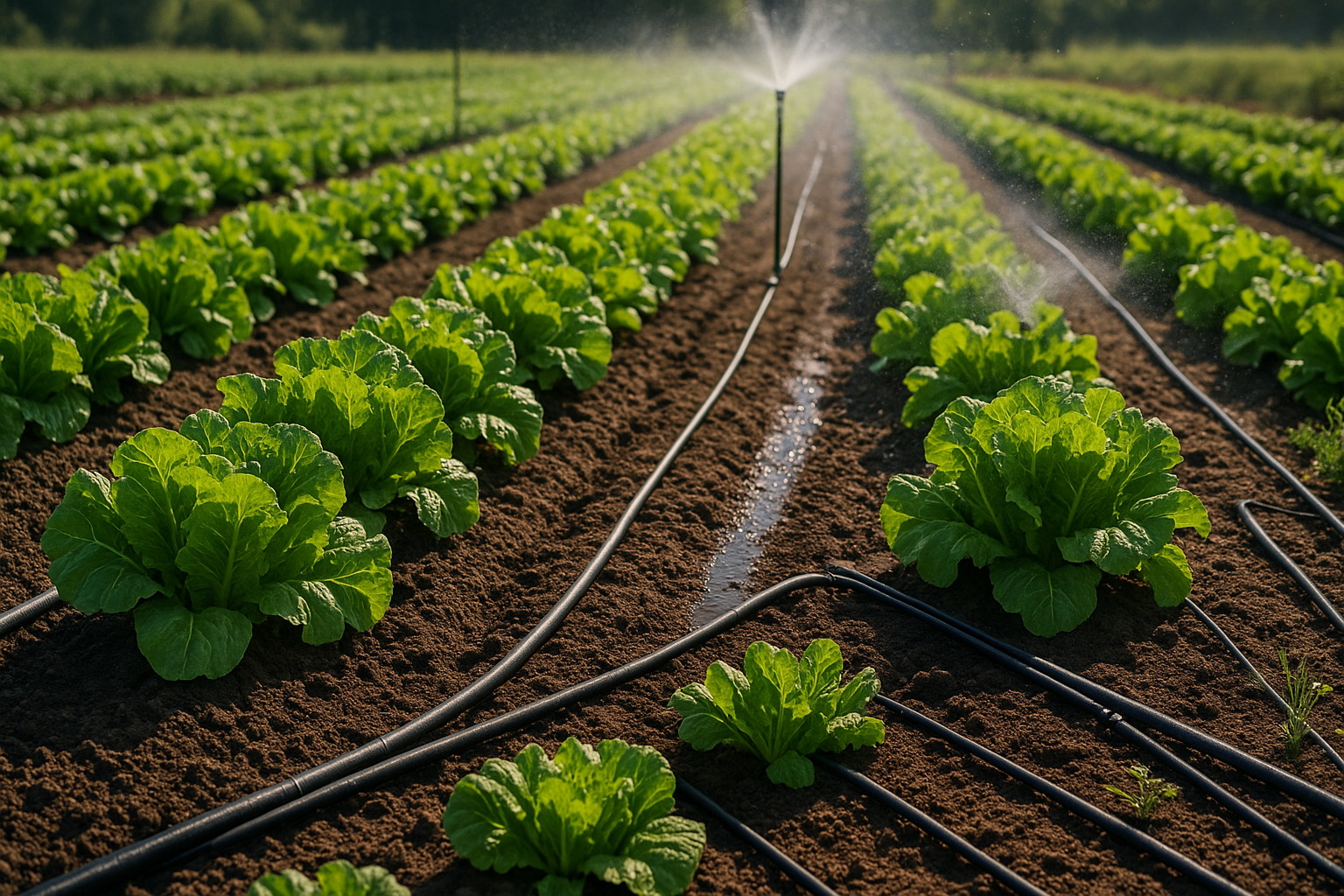Introduction to Lettuce Irrigation
When it comes to growing healthy, vibrant lettuce, choosing the right irrigation system can make all the difference between a thriving crop and a field full of challenges. Proper irrigation in lettuce farming isn’t just about keeping the soil moist; it’s essential for consistent growth, preventing wilted leaves, and avoiding issues like bolting—when lettuce prematurely flowers due to water stress. Many farmers also battle diseases such as root rot and mildew, which often arise from poor watering practices. If you’ve ever seen your crisp greens turn bitter or fall prey to pests and fungi, you know how much irrigation decisions can affect your bottom line.
The good news? There are several tried-and-true lettuce irrigation systems designed to address these challenges directly—from precise drip setups that minimize leaf wetness, to overhead sprinklers that provide gentle coverage, and even modern automated solutions that make watering almost hands-off. In this post, we’ll break down the most effective methods, compare their pros and cons, and offer practical advice to help you choose the right system for your specific lettuce crop. Whether you’re tending a small backyard patch or managing acres of leafy greens, this guide will help ensure your lettuce gets exactly the water it needs—no more, no less.
Understanding Lettuce Water Needs
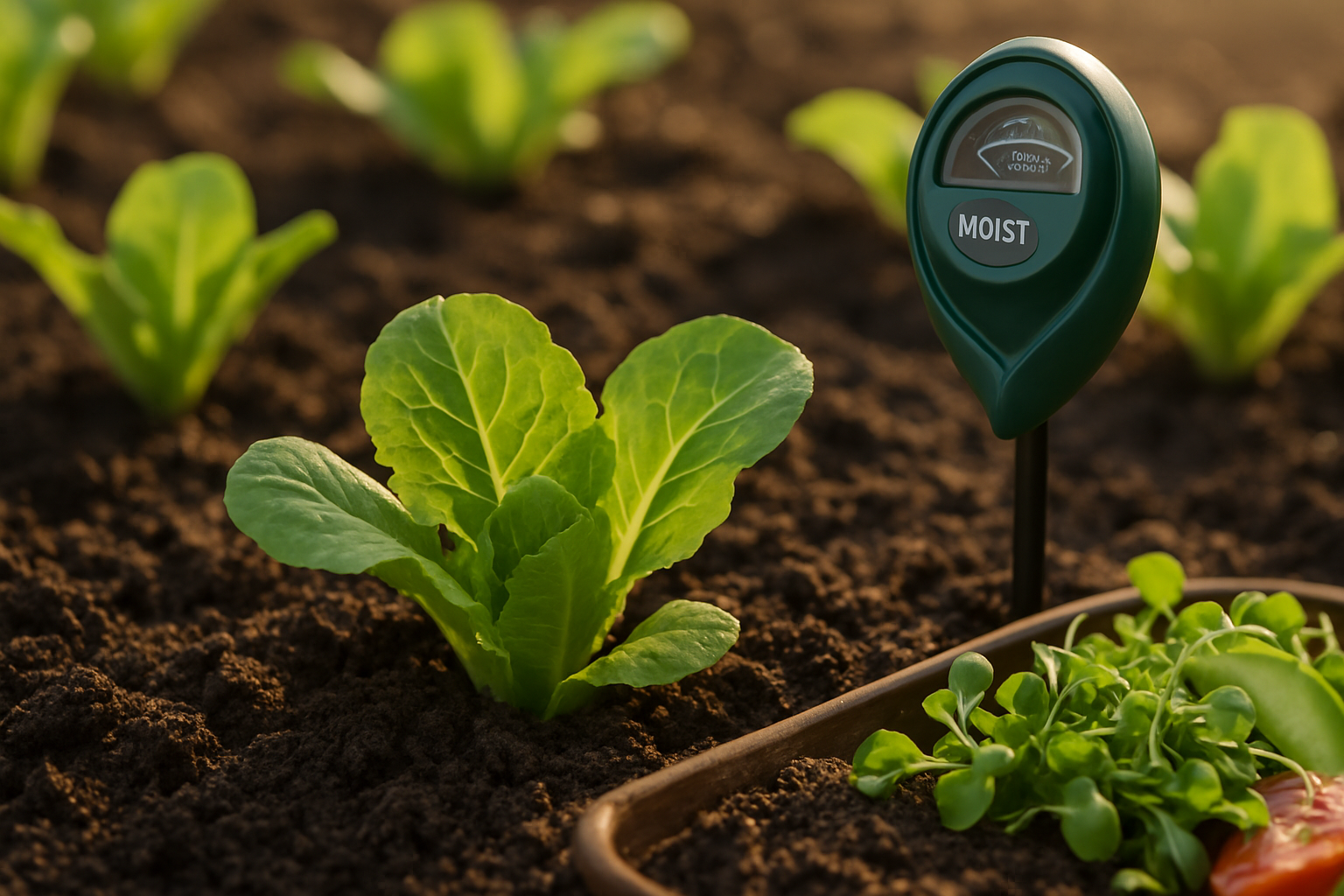
Lettuce, with its shallow root system and tender leaves, requires special attention when it comes to watering. Unlike deeply rooted vegetables, lettuce roots extend only a few inches into the soil, making them highly susceptible to moisture fluctuations. This means the top layer of soil must stay consistently moist—but not soggy—throughout the growing season.
Ideally, the soil should feel damp to the touch, similar to a wrung-out sponge, at a depth of one to two inches. Overly dry soil can quickly stress lettuce, leading to slow growth or, worse, bitter-tasting and tough leaves. On the other hand, waterlogged soil reduces oxygen to the roots and can encourage root rot or fungal diseases.
To achieve that perfect balance, consider checking soil moisture daily using your finger or a simple moisture meter, especially in hotter climates or containers where soil can dry quickly. Drip irrigation or soaker hoses make it easier to deliver gentle, even moisture without splashing the leaves—helpful for preventing disease.
Inconsistent watering, where the soil swings from too dry to too wet, often triggers tip burn (browning of the leaf edges), bolting (premature flowering), and smaller, lower-quality heads. For reliable harvests, aim for uniform soil moisture and water early in the day to allow leaves to dry before evening, which also reduces disease risk.
Remember, lettuce thrives on predictability—stick to a regular watering schedule for the best results in both taste and yield.
Common Types of Irrigation Systems for Lettuce
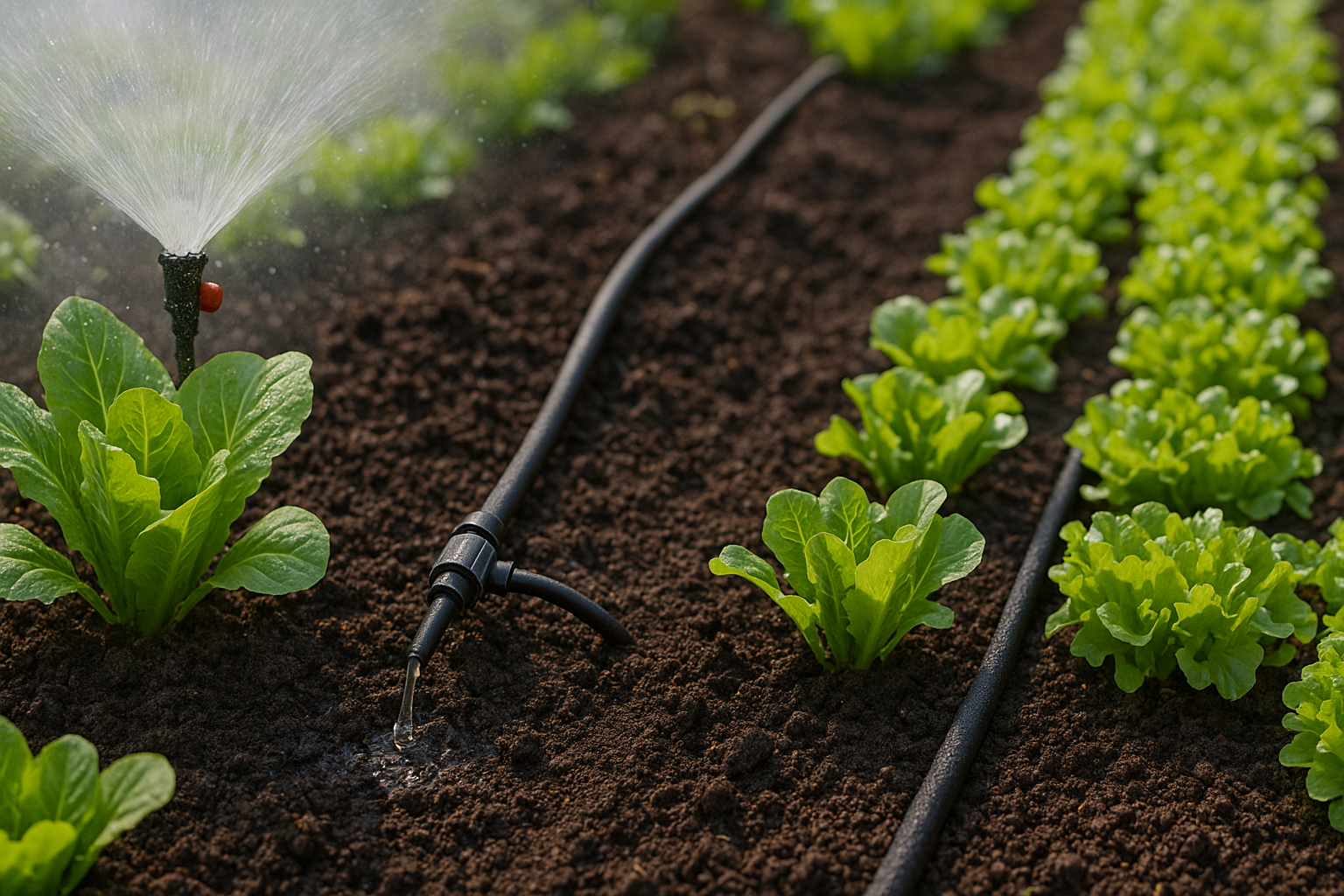
When it comes to watering lettuce, growers have several irrigation options: overhead (sprinkler), drip, and soaker hose systems.
Overhead sprinklers are probably the most familiar. They spray water above the plants, mimicking rainfall. This method works well for small to medium plots and is relatively easy to set up using a hose and portable sprinkler. It keeps leaves moist, which can help cool lettuce on hot days. However, the downside is an increased risk of foliar diseases like downy mildew, as well as water waste from evaporation or runoff.
Drip irrigation, in contrast, delivers water directly to the base of each plant through a network of tubes and emitters. This targeted approach reduces water usage, lowers disease risk by keeping leaves dry, and is excellent for both raised beds in home gardens and large commercial rows. The initial setup can be more complex and costly, especially for larger operations, and emitters may clog if they aren’t properly maintained.
Soaker hoses strike a balance between the two. They’re affordable, easy to lay out alongside lettuce rows, and deliver water directly at soil level for more even distribution than some basic sprinklers. Soaker hoses work well for homeowners and small plots, but may not offer the level of control or scalability that commercial growers need.
Ultimately, choosing the right system depends on your garden’s size, budget, and your willingness to maintain the setup. For home gardeners growing a few beds of lettuce, soaker hoses or a simple drip system are cost-effective and efficient. For commercial growers focused on disease management and water conservation, a well-designed drip irrigation system is usually the best long-term investment.
Why Drip Irrigation Stands Out for Lettuce
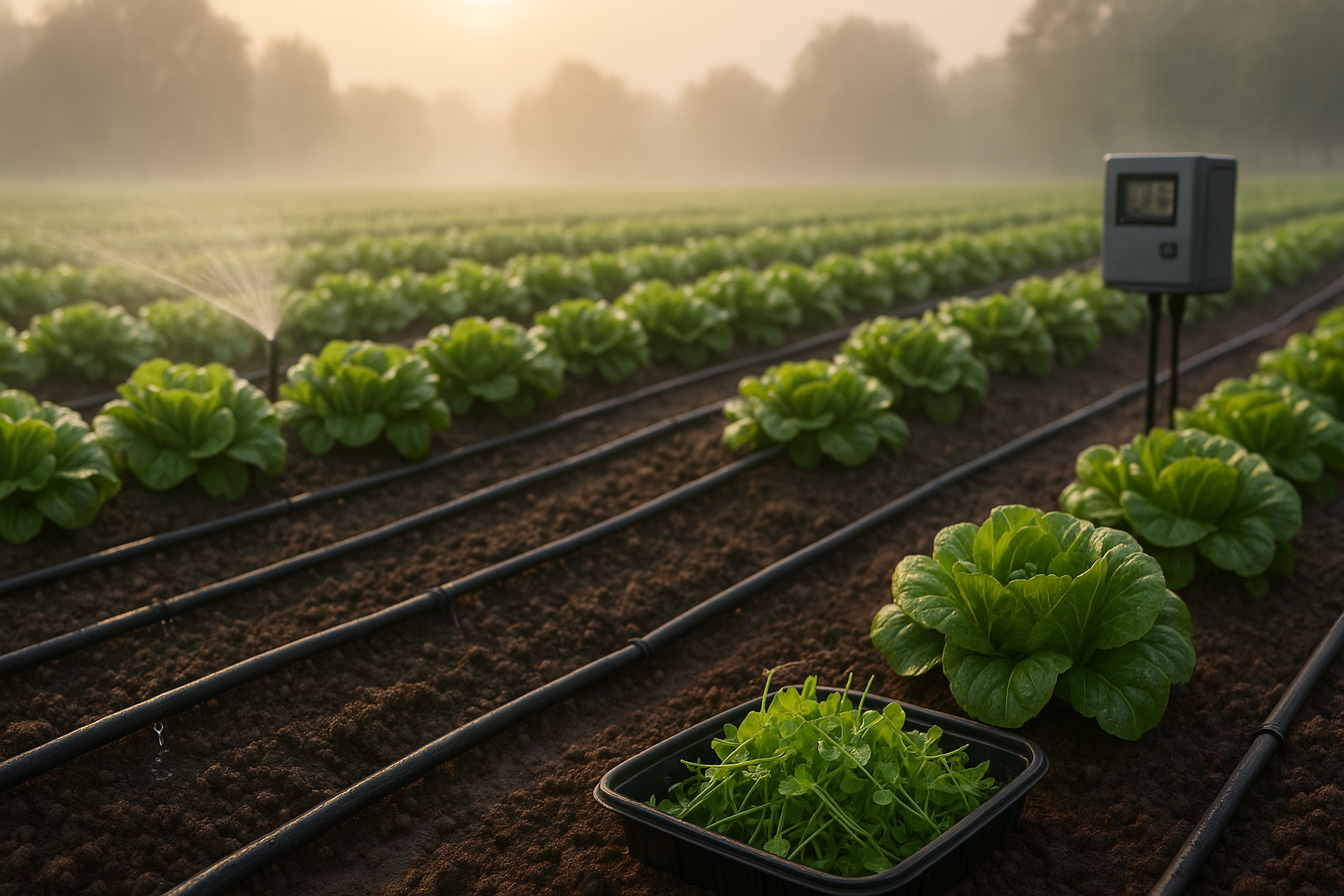
Drip irrigation has quickly become the preferred choice for lettuce growers, and for good reason—it delivers water efficiency, healthier crops, and better yields. Unlike overhead sprinklers that spray water everywhere, drip irrigation sends water straight to the roots, minimizing waste and making sure every drop counts.
This precision means you use less water, which is especially important in areas facing drought or where water supplies are costly. Another big advantage is the way drip lines keep lettuce leaves dry. Because the water goes directly to the soil and not on the foliage, there’s much less risk of spreading fungal diseases like downy mildew or botrytis, which thrive on wet leaves.
Drier leaves also mean a reduced chance of lettuce crown rot, a common issue in humid environments. Trials and commercial farms consistently report higher yields with drip systems—studies have shown that lettuce fields with drip irrigation can achieve up to 20% better productivity compared to traditional methods.
Growers in California, for instance, have found their crop losses decrease substantially with drip due to the reduced disease pressure and the ability to precisely tailor watering schedules to the plants’ needs. You can even use drip irrigation systems to deliver nutrients along with water, leading to more uniform plant growth and healthier lettuce heads.
All these benefits add up to more consistent, high-quality lettuce and less wasted resources, making drip irrigation a smart investment for both home gardeners and commercial producers.
Setting Up an Efficient Drip System
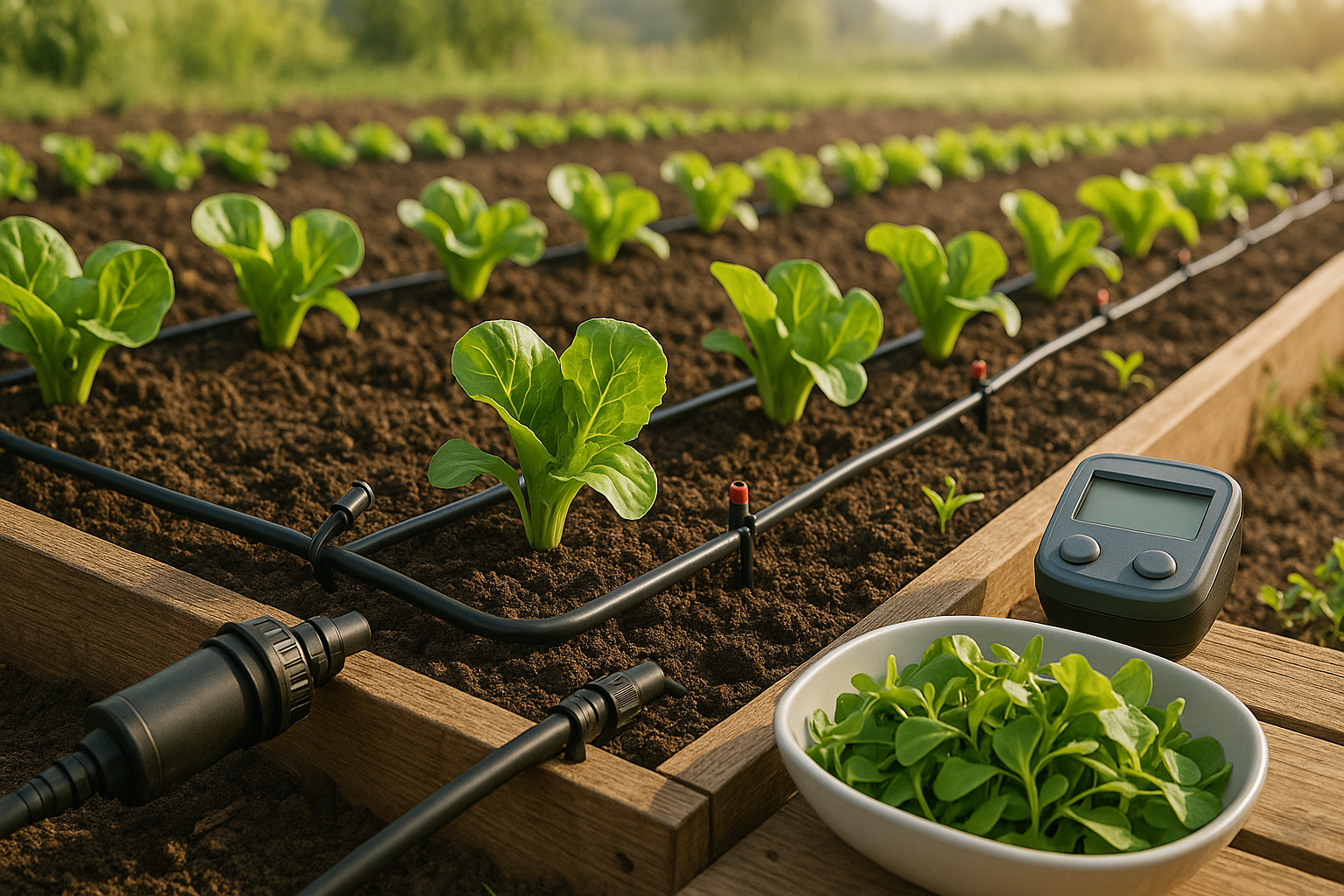
Setting up an efficient drip system for your lettuce beds starts with choosing the right components and layout to fit your garden size and needs. Begin by measuring your beds to determine the length of mainline tubing you’ll require—durable ½-inch polyethylene tubes work well for most home setups.
Next, select emitters that provide a slow, even flow; for lettuce, look for emitters that deliver about 0.5 to 1 gallon per hour, spaced around 12 inches apart to ensure uniform moisture across the roots. Don’t forget to add a filter at the water source, as it keeps debris from clogging your system and extends its lifespan.
Adding a timer is a game-changer—battery-powered models can automate daily watering, helping maintain consistent soil moisture and freeing up your time. For beginners, commercial drip kits are a smart choice since they come with all the parts needed and instructions for easy assembly. However, if you prefer DIY, you can buy components individually—just be sure everything is compatible.
Lay tubing along the base of your lettuce rows, anchoring it with stakes and avoiding high-traffic paths where lines could be damaged. Maintenance is key: check filters regularly, flush lines every few weeks, and watch for leaks or misplaced emitters.
With a good setup and a little attention, your drip system can save water, reduce weeds, and yield crisp, healthy lettuce with less effort. For example, in my own garden, using a simple kit with a timer reduced my summer watering chores from daily hand-watering to just a quick system check twice a week, making it easier to keep up during hot weather.
Special Irrigation Considerations Across Seasons
Irrigation needs shift significantly with the seasons, so it’s important to stay flexible and proactive. During hot, dry spells, plants lose more moisture through evaporation, meaning you’ll likely need to water more frequently or at deeper intervals to keep roots hydrated.
Conversely, in rainy periods, natural precipitation often meets or exceeds your plants’ needs, so you can scale back or even pause automated watering to prevent root rot. Consider using a rain sensor or soil moisture probe for real-time feedback.
In cold or freezing conditions, most plants require less water, and overwatering can lead to frozen pipes or root damage. This is the time to reduce watering to a minimum and prepare your system for winter by draining lines and insulating exposed pipes—a process called winterization.
Keeping an eye on local weather forecasts and monitoring soil moisture levels can help you adjust irrigation schedules on the fly. Smartphone apps or smart irrigation controllers that connect to weather data are excellent tools to automate these changes, ensuring your landscape gets just the right amount of water, whatever the season.
Conclusion & Quick Tips for Better Lettuce Irrigation
Choosing the right irrigation system for your lettuce depends on your garden’s size and your specific goals. For small-scale growers, hand watering or drip irrigation makes it easier to control moisture and reduce water waste. Larger operations often benefit from automated drip or overhead systems for efficiency.
Regardless of your setup, always test soil moisture before watering—using a simple finger test or an inexpensive soil meter helps prevent costly overwatering. Schedule routine checks of hoses and emitters to catch leaks or clogs early, as even a small issue can impact lettuce health.
Be careful not to water late in the evening to avoid fungal problems. Most importantly, observe your lettuce regularly; leaves wilting midday isn’t always bad, but wilting early or late means trouble. Every garden is a bit different, so experiment with timing and amounts, and jot down what works. Over time, attentive observation leads to the crispest, healthiest lettuce.
